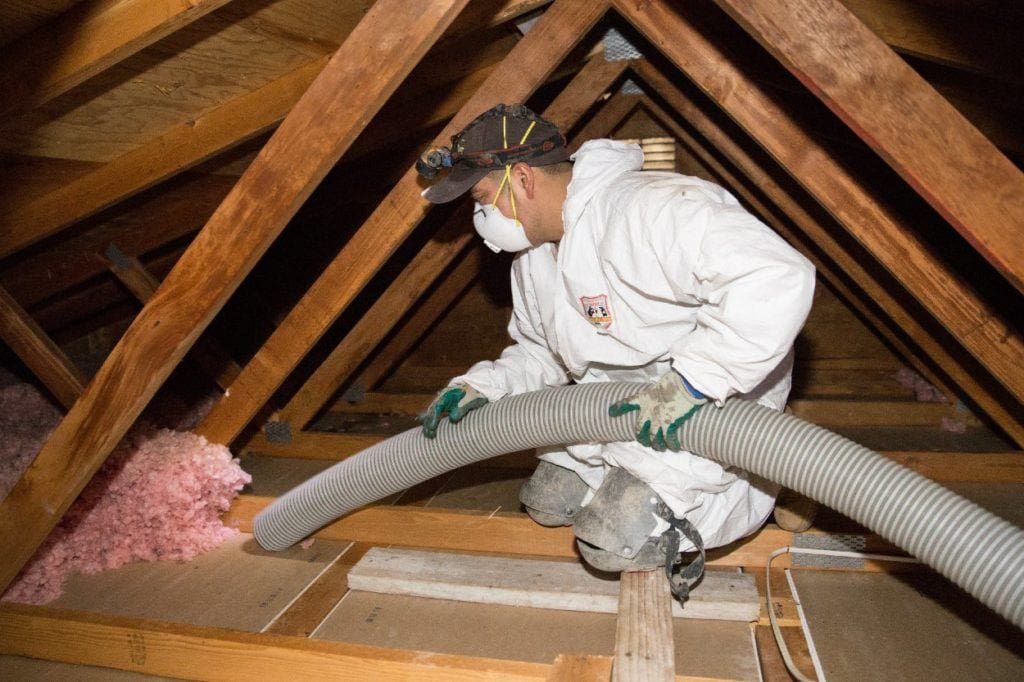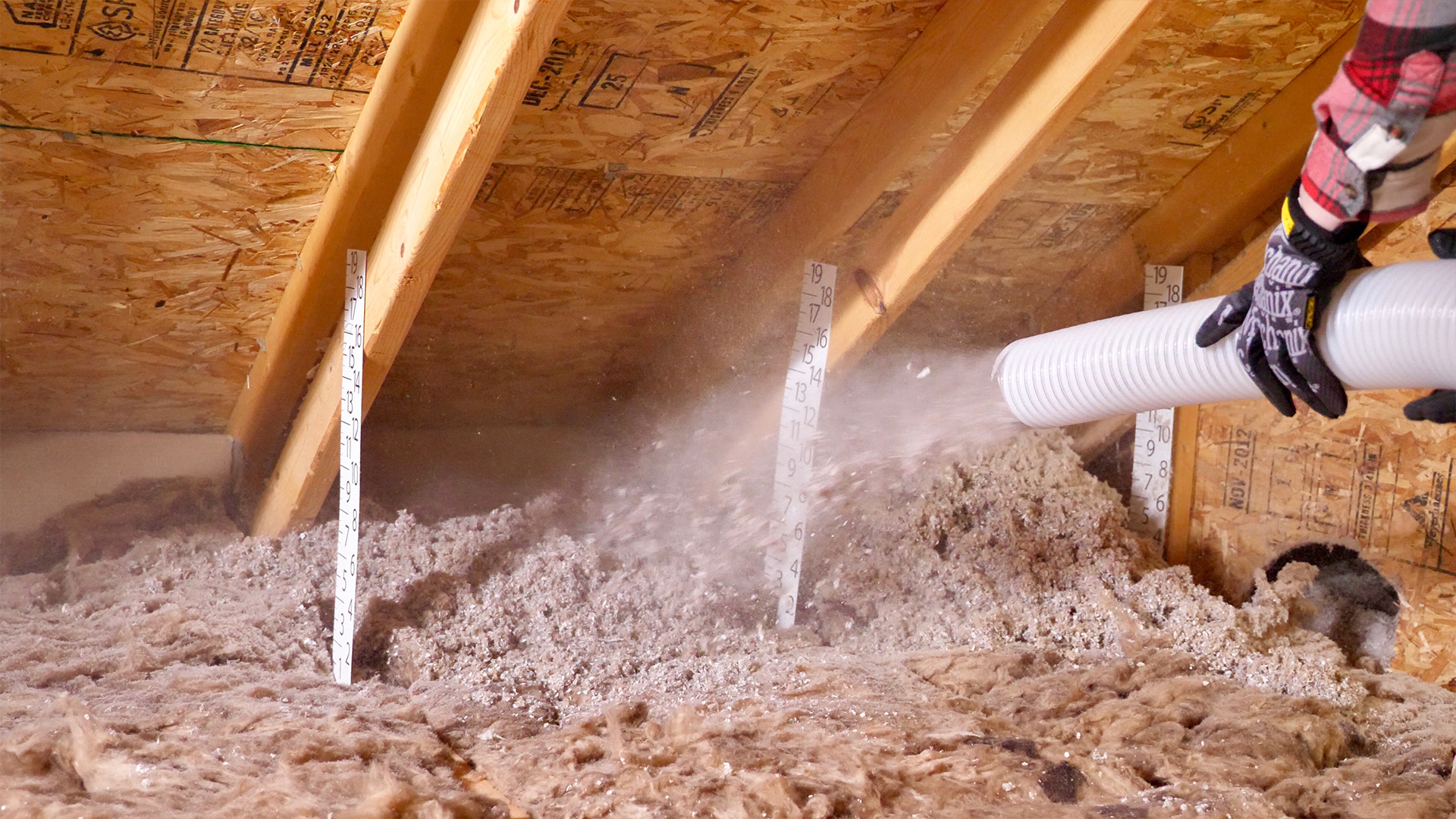Why Attic Insulation DFW is Essential for Energy Efficiency in Dallas-Fort Worth
Why Attic Insulation DFW is Essential for Energy Efficiency in Dallas-Fort Worth
Blog Article
Discover the Various Sorts Of Attic Insulation and Their One-of-a-kind Benefits for Your Home's Energy Performance

Fiberglass Insulation
Fiberglass insulation is just one of the most generally made use of materials for attic insulation due to its superb thermal performance and cost-effectiveness. Made up of small glass fibers, this material successfully catches air, producing an insulating obstacle that aids preserve constant indoor temperature levels. Its high R-value per inch makes it particularly efficient at standing up to warmth transfer, which is vital for power conservation in homes.
Setup of fiberglass insulation is relatively uncomplicated, often available in batts or loose-fill forms, fitting numerous attic room configurations. In addition, it is resistant and non-combustible to moisture, decreasing the risk of mold advancement. This toughness adds to its durability, making fiberglass a feasible lasting financial investment for homeowners.
Additionally, fiberglass insulation is often manufactured from recycled products, which boosts its eco-friendliness. The product can likewise add to soundproofing, decreasing sound transfer between rooms. While it is necessary to use safety gear during installment to stay clear of irritability from the fibers, the total advantages of fiberglass insulation, including power financial savings and ecological considerations, make it a popular option for boosting attic performance and promoting a comfortable living environment.
Spray Foam Insulation
Spray foam insulation is a very reliable alternative for attic room insulation, understood for its exceptional air securing and thermal efficiency. This ingenious insulation material is made up of a mix of isocyanate and polyol resin, which, when incorporated, broadens rapidly to fill gaps and dental caries in the attic room. Its ability to comply with numerous surfaces ensures a continual obstacle versus air leakages, dramatically lowering warm loss throughout chillier months and heat gain during warmer periods.
Among the vital advantages of spray foam insulation is its high R-value per inch, which suggests it offers exceptional thermal resistance in a fairly thin application. This is especially advantageous in attics where area is commonly restricted. In addition, spray foam can help minimize wetness accumulation, minimizing the danger of mold and mold development, which can be damaging to both the structure and interior air quality.
While the preliminary cost of spray foam insulation may be greater than traditional options, its long-lasting power savings, combined with enhanced convenience and enhanced home worth, make it a worthwhile financial investment for house owners seeking improved power efficiency. Attic Insulation DFW. In general, spray foam insulation sticks out as a reliable service for enhancing attic insulation
Cellulose Insulation

Cellulose insulation is a popular selection for attic room insulation, primarily composed of recycled paper items treated with fire retardants. This eco-friendly option is known for its superb thermal performance, properly lowering warmth transfer in both summer and cold weather. The dense composition of cellulose permits it to fill voids and voids in attic room areas, offering a smooth barrier against air leakages.
One of the substantial benefits of cellulose insulation is its capacity to resist mold and mildew and insects, owing to the fire resistant treatments used throughout manufacturing. In addition, it flaunts a high R-value per inch, which converts into remarkable energy performance. Property owners can anticipate lower cooling and heating costs as a result of enhanced insulation.
Installment is commonly achieved with blowing loosened cellulose right into the desired area, enabling for a efficient and fast procedure. This method likewise reduces disturbance to the existing structure. Cellulose insulation has a reasonably low environmental effect, as its production process uses recycled products, adding to sustainable structure methods.
Rock Woollen Insulation
Amongst the different options for attic insulation, rock wool, likewise understood as mineral woollen, sticks out because of its excellent thermal and acoustic efficiency. Made from recycled or all-natural products, rock wool is produced by melting rock and rotating it into fibers, causing a product that offers exceptional insulation residential properties.
Among the substantial advantages of rock wool insulation is its high R-value, which shows its efficiency in standing up to warmth circulation. This particular not just boosts energy performance but also contributes to keeping a comfortable indoor temperature level year-round. Furthermore, rock woollen is naturally fire-resistant, making it a more secure option for homes as it can hold up against high temperature levels without melting or launching hazardous fumes.
Additionally, rock wool insulation excels in soundproofing abilities, effectively minimizing sound transmission in between spaces and from outdoors sources. This makes it an excellent option for home owners looking for a calm living atmosphere. Moreover, rock woollen is moisture-resistant, helping to prevent mold development and maintaining the structural stability of the attic room. On the whole, rock woollen insulation supplies a comprehensive solution for boosting power efficiency, safety and security, and comfort in property settings. Website
Glowing Barrier Insulation
Glowing obstacle insulation works as an effective solution for lessening warmth transfer in attic rooms, specifically in warmer environments. This sort of insulation works by showing induction heat far from living spaces, thus reducing the quantity of heat that enters a home during heat - Attic Insulation DFW. Commonly composed of a very reflective material, such as light weight aluminum foil, glowing obstacles are mounted in attics, facing the roofing, where they can obstruct incoming heat from the sunlight
The primary benefit of radiant barrier insulation is its ability to reduced air conditioning expenses. By mirroring warmth as opposed to absorbing it, radiant barriers can help maintain an extra stable interior temperature level, lowering the workload on air conditioning systems. This efficiency translates into reduced get more power expenses and raised comfort for home owners.
Along with energy cost savings, radiant obstacles can also add to improved indoor air high quality. By reducing warmth build-up, they aid minimize moisture levels, which can avoid mold growth and boost general air flow. When installed correctly, radiant obstacle insulation can be an indispensable addition to any type of energy-efficient home, making it a deserving consideration for home owners aiming to improve their attic room insulation technique.
Verdict
In final thought, understanding the different kinds of attic room insulation-- fiberglass, spray foam, cellulose, rock More Bonuses wool, and radiant obstacles-- makes it possible for house owners to make educated choices concerning power performance. By selecting the suitable insulation product, substantial decreases in energy expenses can be attained, along with improvements in interior convenience.

In final thought, comprehending the different types of attic room insulation-- fiberglass, spray foam, cellulose, rock wool, and glowing obstacles-- enables homeowners to make educated decisions pertaining to power efficiency.
Report this page